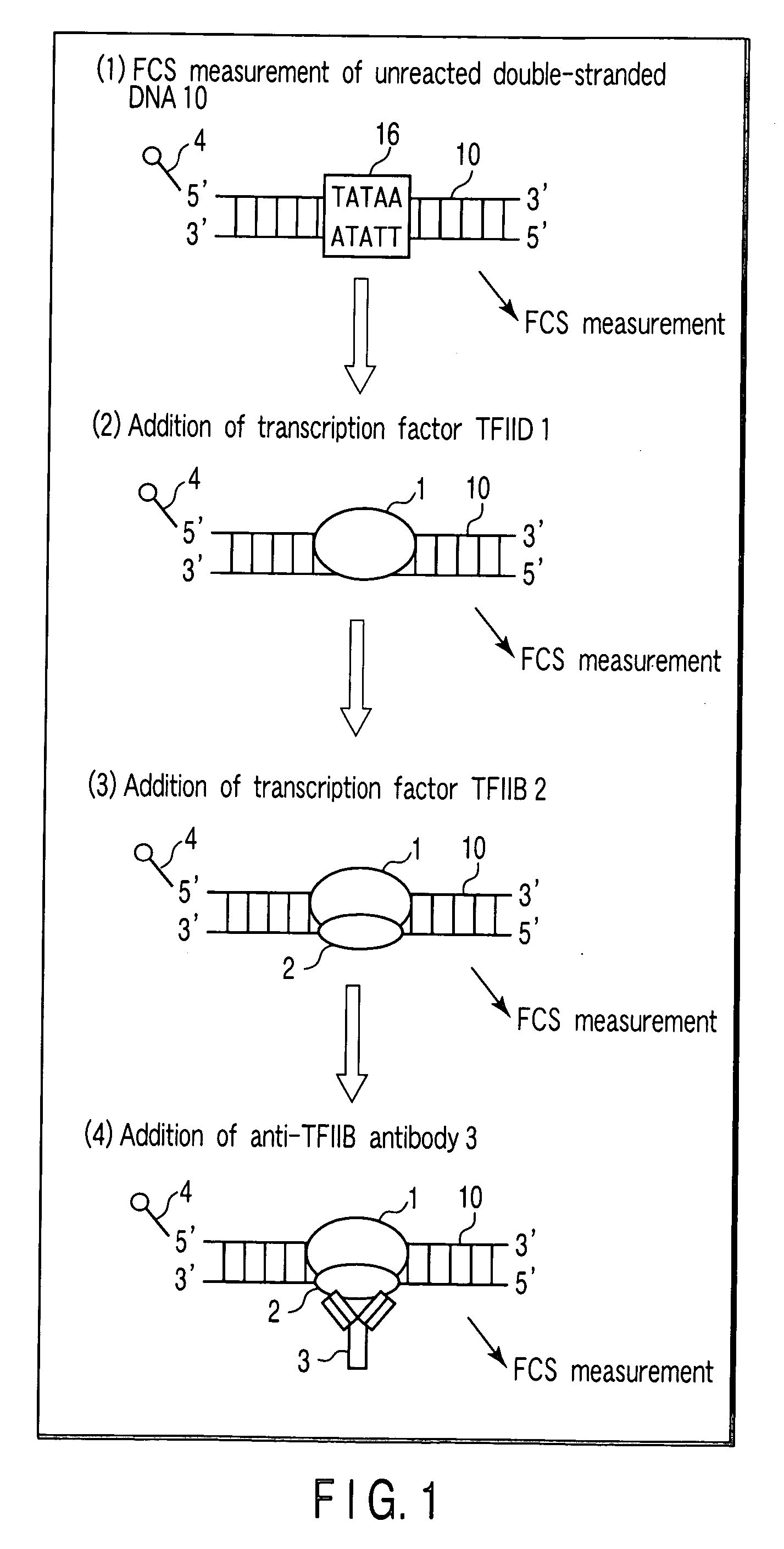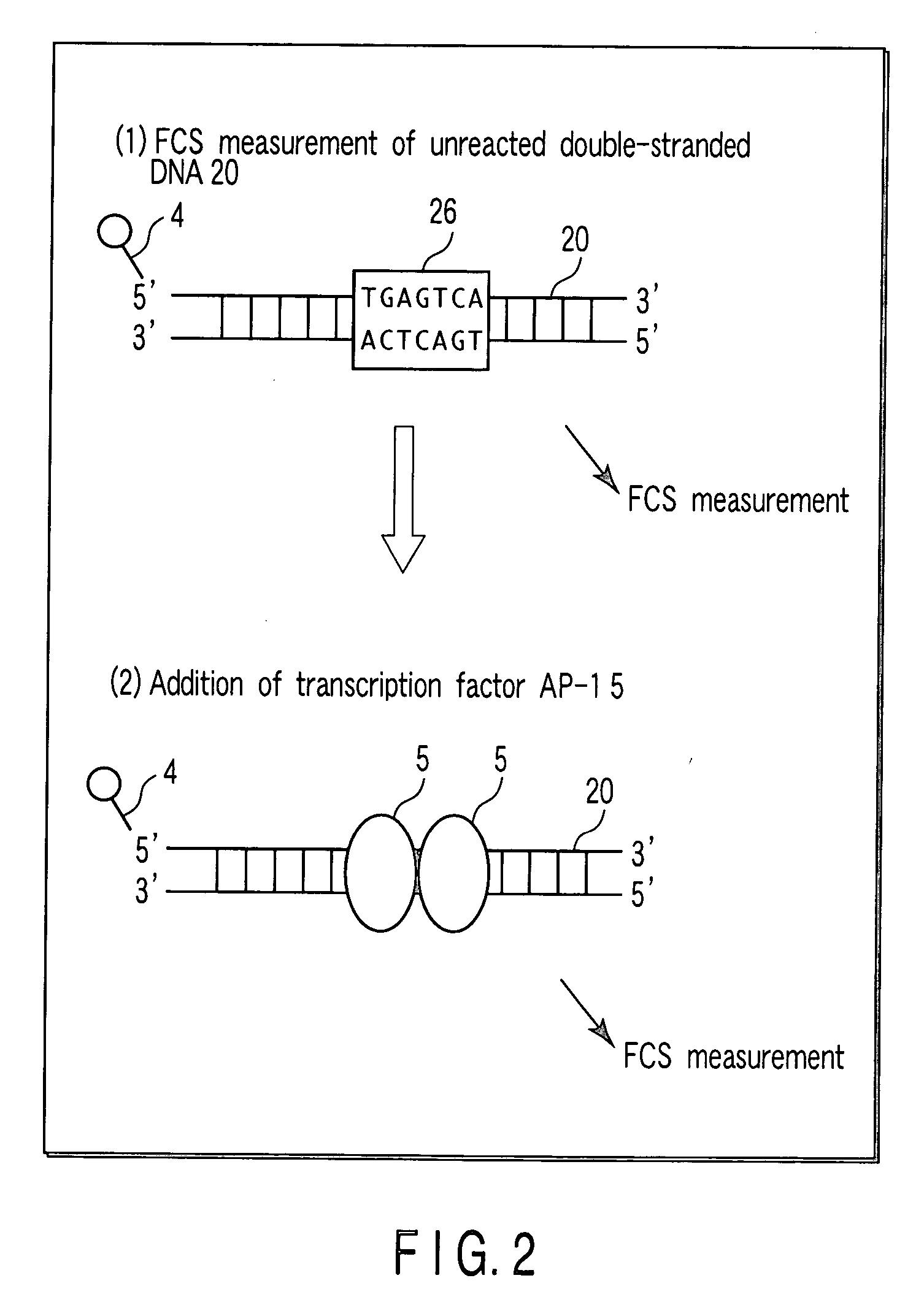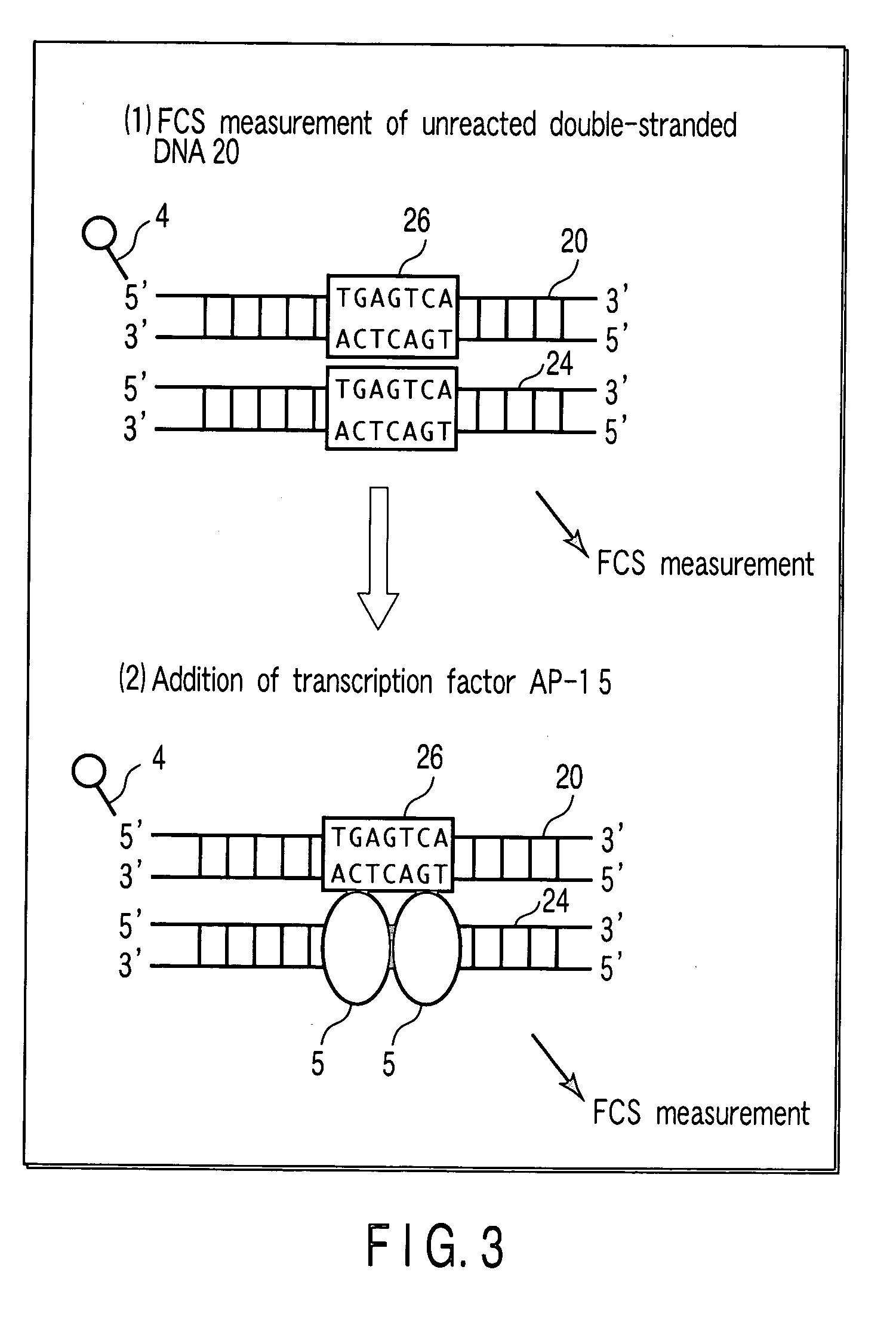Method of detecting reaction of DNA and DNA-binding protein
a technology of dna and binding protein, which is applied in the field of detecting the reaction of dna and dna binding protein, can solve the problems of troublesome operation and time-consuming detection, and achieve the effect of short tim
- Summary
- Abstract
- Description
- Claims
- Application Information
AI Technical Summary
Benefits of technology
Problems solved by technology
Method used
Image
Examples
example 1
[0085] In the present Example, a binding reaction of a DNA, and a transcription factor TFIID and a transcription factor TFIIB which are a DNA-binding protein is detected.
[0086] As a DNA, a double-stranded DNA 10 shown in FIG. 5 is used. The double-stranded DNA 10 consists of an oligo DNA 11 which has been labeled with a fluorescent label 4 (TAMRA label) at a 5′-terminal, and an oligo DNA 12 having a nucleotide sequence complementary to that of the oligo DNA 11. The double-stranded DNA 10 has a TATAA sequence (a complementary sequence is an ATATT sequence), which is a binding site 16 to which a transcription factor TFIID and a transcription factor TFIIB bind.
[0087] As a DNA-binding protein, a transcription factor TFIID 1 containing TBP (TATA binding protein) and a transcription factor TFIIB 2 are used. Further, as an antibody which binds to a transcription factor TFIIB 2, an anti-TFIIB antibody 3 is used.
[0088] As a transcription factor TFIID 1, a transcription factor TFIIB 2 and ...
example 2
[0113] In the present Example, regarding a binding reaction of a DNA and a transcription factor AP-1 which is a DNA-binding protein, dependency on a concentration of a transcription factor AP-1 is examined.
[0114] As a DNA, a double-stranded DNA 20 shown in FIG. 6 is used. The double-stranded DNA 20 consists of an oligo DNA 21 having a fluorescent label 4 (TAMRA label) at a 5′-terminal, and an oligo DNA 22 having a nucleotide sequence complementary to that of the oligo DNA 21. The double-stranded DNA 20 has a TGAGTCA sequence (a complementary sequence is an ACTCAGT sequence), which is a binding site 26 to which a transcription factor AP-1 binds. A length of the double-stranded DNA 20 is suitably 100 bp or less, particularly desirably 10 to 50 bp. When a length of a double-stranded DNA is in this range, result of FCS measurement is obtained precisely, because an increment ratio of a molecular weight of a double-stranded DNA is great in the case where a double-stranded DNA is bound to...
example 3
[0136] In the present Example, regarding a binding reaction of a DNA and a transcription factor in a cell nucleus extract, dependency on a concentration of a cell nucleus extract is examined. As a DNA, the double-stranded DNA 20 used in Example 2 is used.
[0137] For preparing a nucleus extract from a cell, the following shown in Table 18 are used.
TABLE 18HeLa cellEnglish name and othersMedium D-MEMDulbecco's ModifiedEagle's Medium(manufactured by SigmaD5796)Phosphate bufferedphosphate buffered salinesaline PBS (−)(GIBCO 21600-010)Fetal bovine serumFetal Bovine Serum(GIBCO)Recombinant human tumorRecombinant Human TNF-αnecrosis factor TNF-α(STARTHMANN BIOTEC AG)DC protein Assay KitDC Protein Assay Kit(BIORAD 500-0116)Protease inhibitorProtease InhibitorcocktailCocktail (manufactured bySigma P-1860)
[0138] HeLa cells are put into the confluent state in a 10 cm dish. After the cells are washed with PBS(−) two times, a medium is exchanged with 0.5% FCS / DMEM, followed by stimulation with...
PUM
| Property | Measurement | Unit |
|---|---|---|
| time | aaaaa | aaaaa |
| concentration | aaaaa | aaaaa |
| concentration | aaaaa | aaaaa |
Abstract
Description
Claims
Application Information
 Login to View More
Login to View More - R&D
- Intellectual Property
- Life Sciences
- Materials
- Tech Scout
- Unparalleled Data Quality
- Higher Quality Content
- 60% Fewer Hallucinations
Browse by: Latest US Patents, China's latest patents, Technical Efficacy Thesaurus, Application Domain, Technology Topic, Popular Technical Reports.
© 2025 PatSnap. All rights reserved.Legal|Privacy policy|Modern Slavery Act Transparency Statement|Sitemap|About US| Contact US: help@patsnap.com



